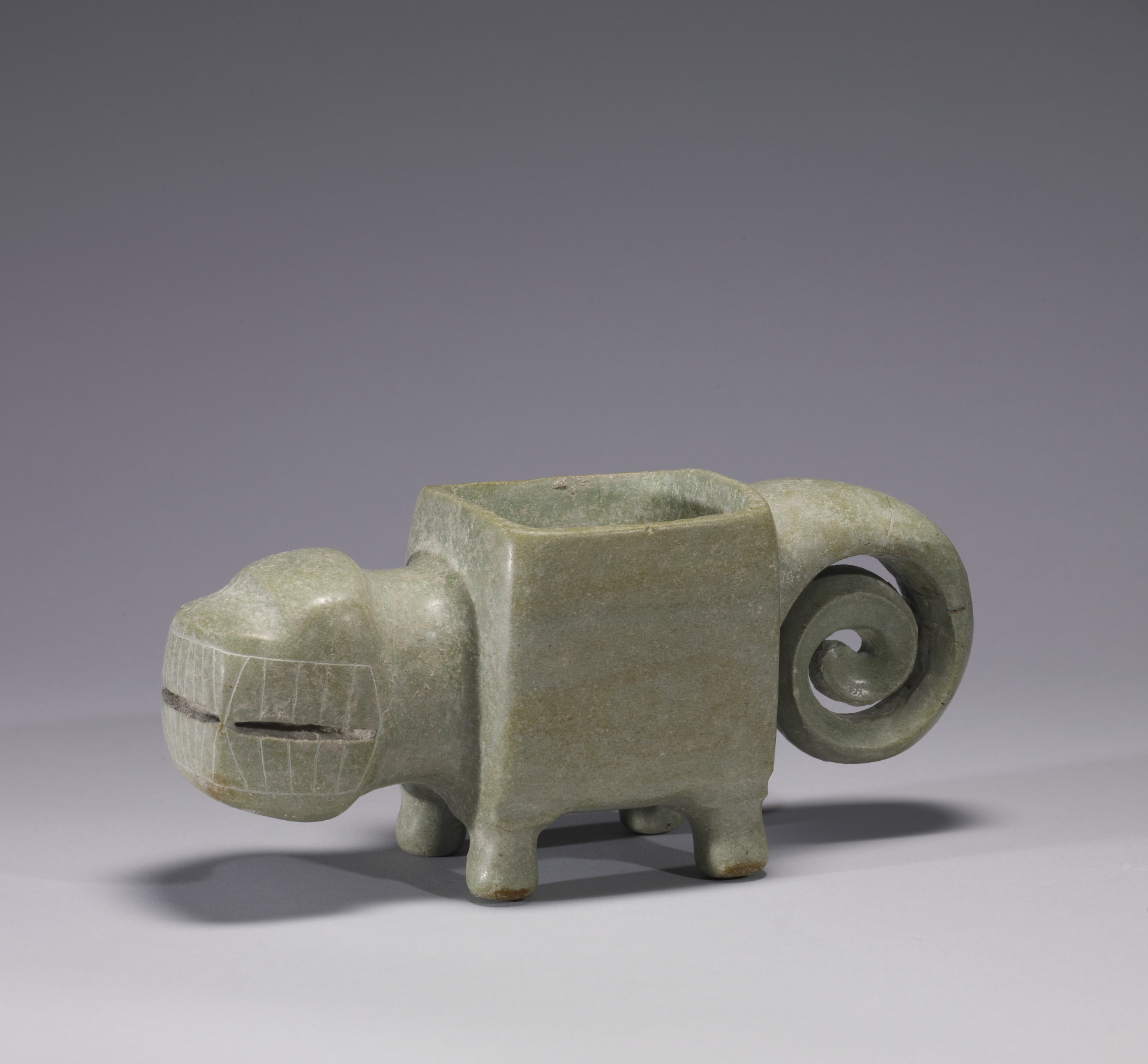Jaguar Mortar
(Ancient Americas )
Carved and polished stone 'mortars,' carved as stylized felines or birds, are a well-known category of a poorly known Chorrera culture that flourished on the east coast of Ecuador from 1500-300 BC. Many, such as this example, are carved of green stone, likely due to the association of the color with fertility. This rather abstracted feline mortar represents a jaguar, the prototypical, potent, altar-ego of shamans throughout Middle America.
Works such as this one are thought to have served as ritual mortars for the preparation of hallucinogenic snuffs, to be inhaled by shamans to facilitate their interaction with the spirit realm. Although this vessel exhibits some fine scratches within the bowl, it does not seem to have received extensive use. It is possible that this particularly elegant version was created specifically for mortuary internment- it may have thus been used a single time, containing freshly prepared snuff for a deceased shaman to take with him into the spirit realm.
Provenance
Provenance (from the French provenir, 'to come from/forth') is the chronology of the ownership, custody, or location of a historical object. Learn more about provenance at the Walters.
Private collection, New Jersey, prior to June 2006; Austen-Stokes Ancient Americas Foundation [John Stokes as agent], June 8, 2006, by purchase [Arte Primitivo, New York, as agent]; Walters Art Museum, 2007, by gift.
Geographies
Ecuador (Place of Origin)
Measurements
H: 4 5/8 × W: 3 7/8 × L: 10 1/4 in. (11.7 × 9.8 × 26 cm)
Credit Line
Gift of the Austen-Stokes Ancient Americas Foundation, 2007
Location in Museum
Not on view
Accession Number
In libraries, galleries, museums, and archives, an accession number is a unique identifier assigned to each object in the collection.
In libraries, galleries, museums, and archives, an accession number is a unique identifier assigned to each object in the collection.
41.326


